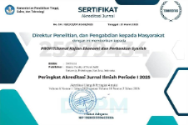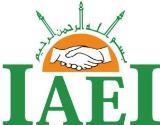RISIKO AKAD MURABAHAH PADA KOPERASI SERBA USAHA (KSU) DI BMT TANJUNG
Authors (s)
(1) * M Alief Hidayatullah
 (Universitas Nurul Jadid)
(Universitas Nurul Jadid) Indonesia
(2) Rafika Lusi Aprilia (Perbankan Syariah Fakultas Agama Islam Universitas Nurul Jadid)
Indonesia
(*) Corresponding Author
AbstractThis study discusses the risks of murabahah contracts, as we all know that murabahah financing is in great demand by the public, especially in sharia-based multi-business cooperatives (KSU) - BMT Tanjung, this is because it is considered fast and easy in practice. This study uses a qualitative descriptive design with observation, documentation and interview techniques. This lesson takes place in a multi-business cooperative (KSU) BMT Tanjung, the results of this research are (1) where murabahah products are widely used as consumption payments and there is also capital used for business continuity, (2) the risks associated with murabahah a lot of payments, goods and collateral, (3) risk management is carried out by sharia murabahah multi-business cooperatives (KSU) sharia-bmt bandar loyal quite well in its management, it's just that there are some managements, especially those related to goods that are not quite right, namely murabahah contracts that made before the goods are placed in the hands of the Sharia Financial Services cooperative (KSU) sharia-compliant BMT Tanjung. The limitation of this study is the lack of risk associated with customers, because the Sharia Financial Services Cooperative does not have any risks associated with customer risk, but in this study researchers found a new risk, namely the risk associated with collateral. This study discusses the risks of murabahah contracts, as we all know that murabahah financing is in great demand by the public, especially in sharia-based multi-business cooperatives (KSU) - BMT Tanjung, this is because it is considered fast and easy in practice. This study uses a qualitative descriptive design with observation, documentation and interview techniques. This lesson takes place in a multi-business cooperative (KSU) BMT Tanjung, the results of this research are (1) where murabahah products are widely used as consumption payments and there is also capital used for business continuity, (2) the risks associated with murabahah a lot of payments, goods and collateral, (3) risk management is carried out by sharia murabahah multi-business cooperatives (KSU) sharia-bmt bandar loyal quite well in its management, it's just that there are some managements, especially those related to goods that are not quite right, namely murabahah contracts that made before the goods are placed in the hands of the Sharia Financial Services cooperative (KSU) sharia-compliant BMT Tanjung. The limitation of this study is the lack of risk associated with customers, because the Sharia Financial Services Cooperative does not have any risks associated with customer risk, but in this study researchers found a new risk, namely the risk associated with collateral. |
Keywords
Full Text: PDF
Refbacks
- There are currently no refbacks.
Copyright (c) 2023 M Alief Hidayatullah
This work is licensed under a Creative Commons Attribution-NonCommercial-ShareAlike 4.0 International License.
Published by Islamic Faculty of Nurul Jadid University, Probolinggo, East Java, Indonesia.





.jpg)



